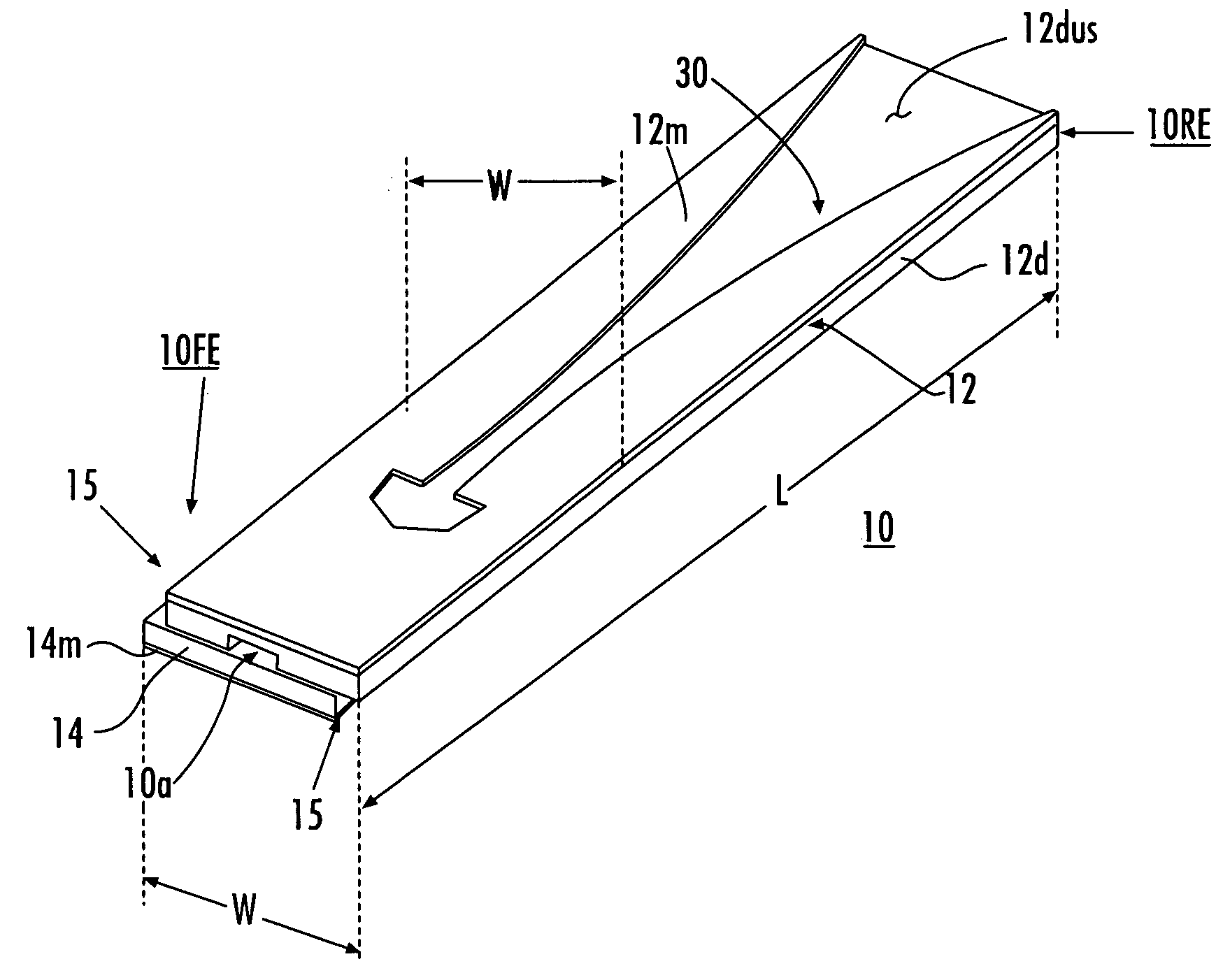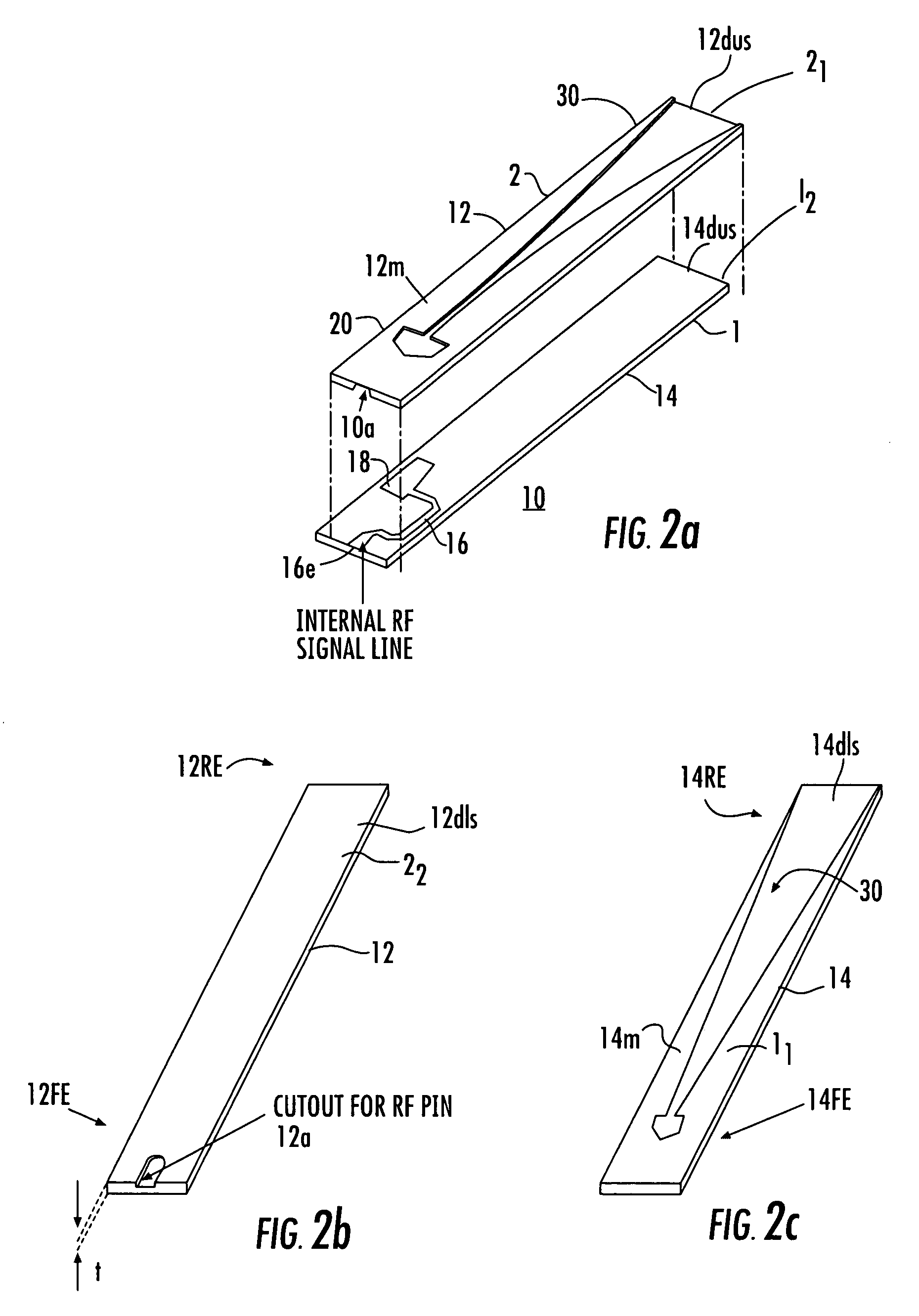Horn antenna array and methods for fabrication thereof
a technology of antenna arrays and antennas, applied in the direction of antennas, slot antennas, basic electric elements, etc., can solve the problems of exacerbated problems associated with the fabrication of antenna arrays, efficient radiators in the plane of boards
- Summary
- Abstract
- Description
- Claims
- Application Information
AI Technical Summary
Problems solved by technology
Method used
Image
Examples
Embodiment Construction
[0020]By contrast with the arrangement of the abovementioned Angelucci U.S. Pat. No. 6,891,511 patent, a method according to an aspect of the invention fabricates printed-circuit-based horn antenna elements individually, assembles them to a ground plane individually or in groups, and then makes the physical attachments.
[0021]FIG. 1a is a simplified perspective or isometric view of a single horn antenna element 10 according to an aspect of the invention. Antenna 10 defines a feed end 10FE, a radiating end 10RE, and an overall length L. In FIG. 1a, the antenna element 10 is comprised of two juxtaposed “printed-circuit” or dielectric boards, namely an upper board 12 and a lower board 14, each having width W. Each of the upper board 12 and lower board 14 defines a feed end 12FE and 14FE, respectively, and a radiating end 12RE and 14RE, respectively. FIG. 1b illustrates a feed-end view of the arrangement of FIG. 1a. Upper board 12 includes two portions, namely a dielectric board portion ...
PUM
 Login to View More
Login to View More Abstract
Description
Claims
Application Information
 Login to View More
Login to View More - R&D
- Intellectual Property
- Life Sciences
- Materials
- Tech Scout
- Unparalleled Data Quality
- Higher Quality Content
- 60% Fewer Hallucinations
Browse by: Latest US Patents, China's latest patents, Technical Efficacy Thesaurus, Application Domain, Technology Topic, Popular Technical Reports.
© 2025 PatSnap. All rights reserved.Legal|Privacy policy|Modern Slavery Act Transparency Statement|Sitemap|About US| Contact US: help@patsnap.com



